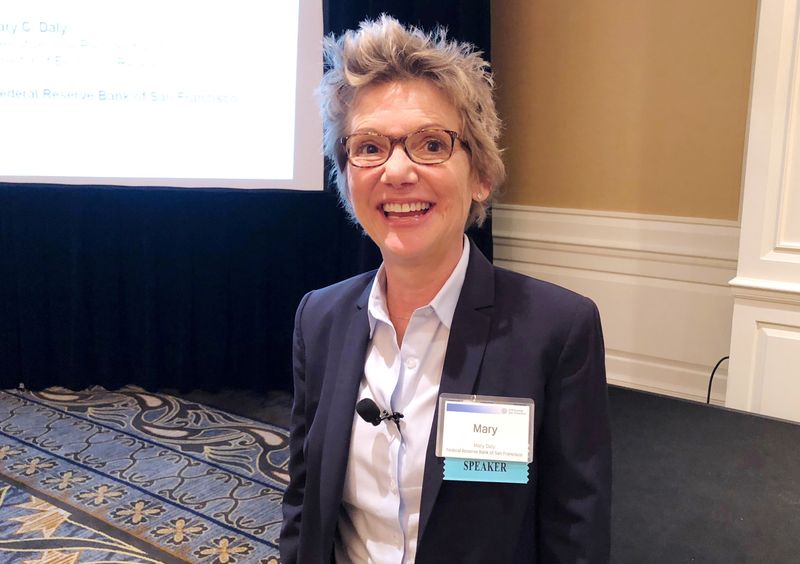By Ann Saphir
– San Francisco Federal Reserve Bank President Mary Daly said Tuesday she believes the “main risk” to the U.S. economy is from too-high inflation that could get worse as Russia’s invasion of Ukraine boosts oil prices and China’s crackdown on COVID-19 further disrupts supply chains.
“Even though we have these uncertainties around Ukraine, and we have the uncertainties around the pandemic, it’s still time to tighten policy in the United States,” Daly said at a virtual Brookings Institution event, “marching” rates up to the neutral level and perhaps even higher to a level that would restrict the economy to ensure inflation comes back down.
“Inflation has persisted for long enough that people are starting to wonder how long it will persist,” she said. “I’m already focused on let’s make sure this doesn’t get embedded and we see those longer-term inflation expectations drift up.”
The Fed last week raised rates for the first time in three years, and signaled ongoing rate hikes ahead. Fed Chair Jerome Powell on Monday said the central bank needs to move rates “expeditiously” higher in remarks widely understood to signal more aggressive tightening at coming meetings.
Daly on Tuesday said the labor market is tight enough to be unsustainable, pointing to worker churn including new hires who “ghost” their new employers by not showing up because they have other options.
“In addition to pushing up wage inflation, which could ultimately push up price inflation, putting us in sort of a vicious cycle,” she said, “it’s just not a very sustainable way to manage the economy.”
She said she sought a “smooth landing” for the labor market as rate hikes help bring down inflation
(Reporting by Ann Saphir; Editing by Andrea Ricci)
